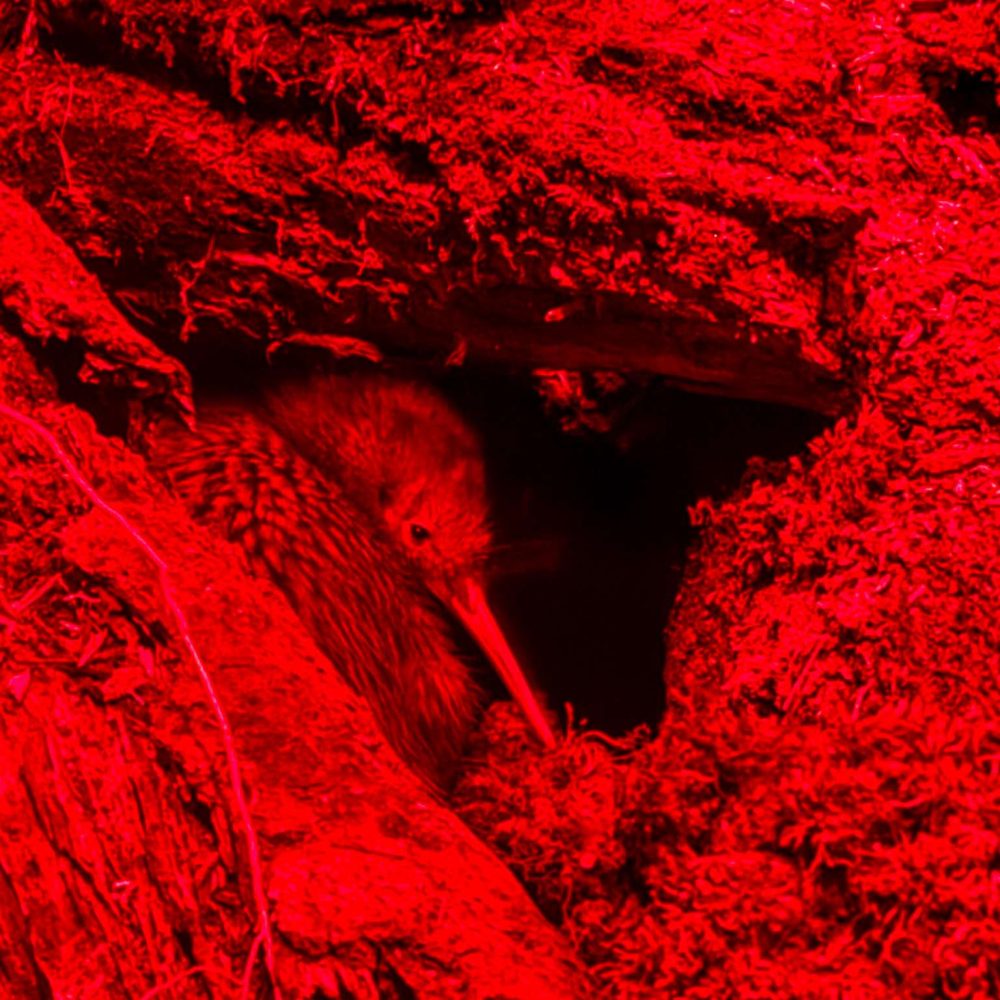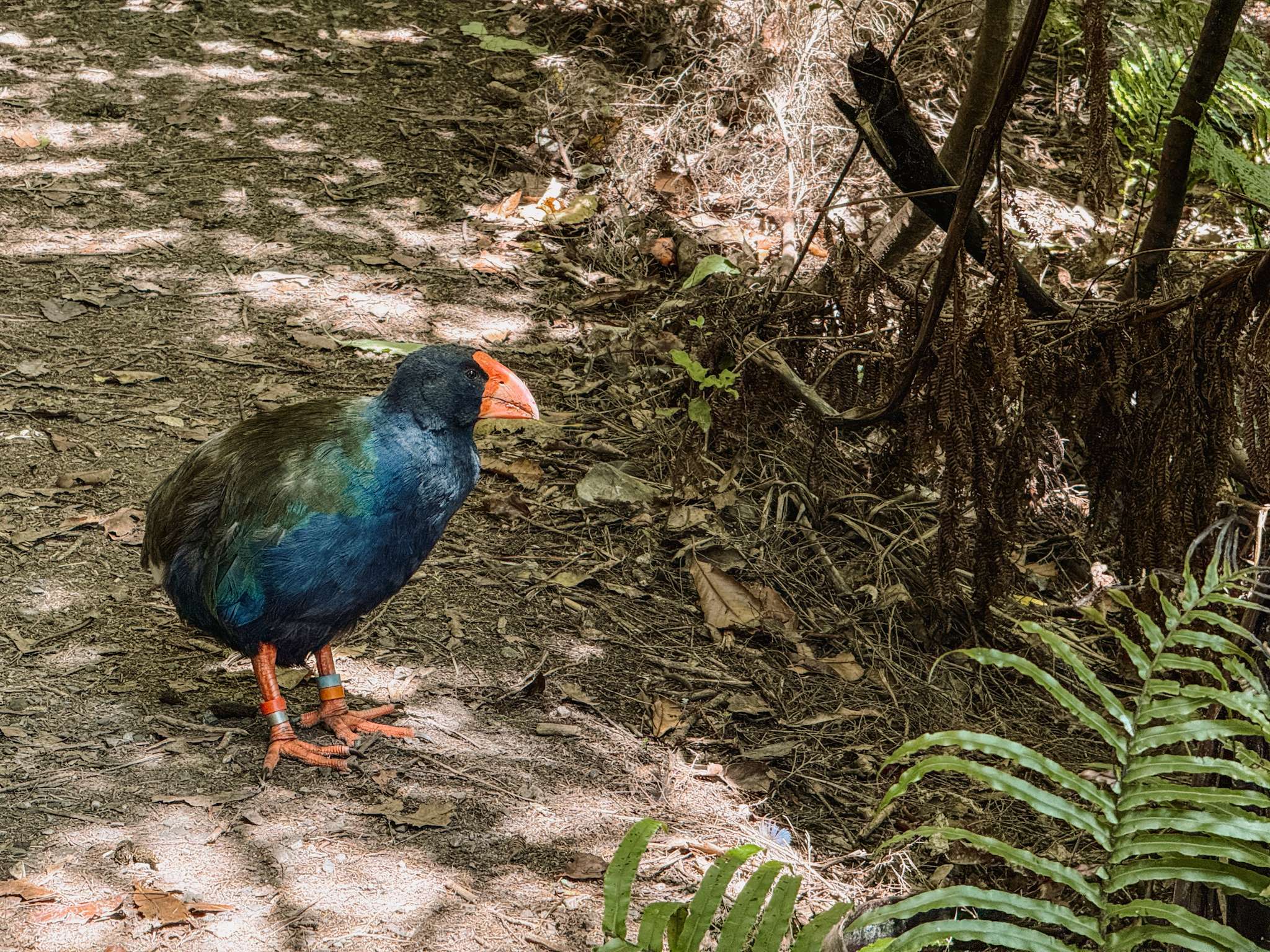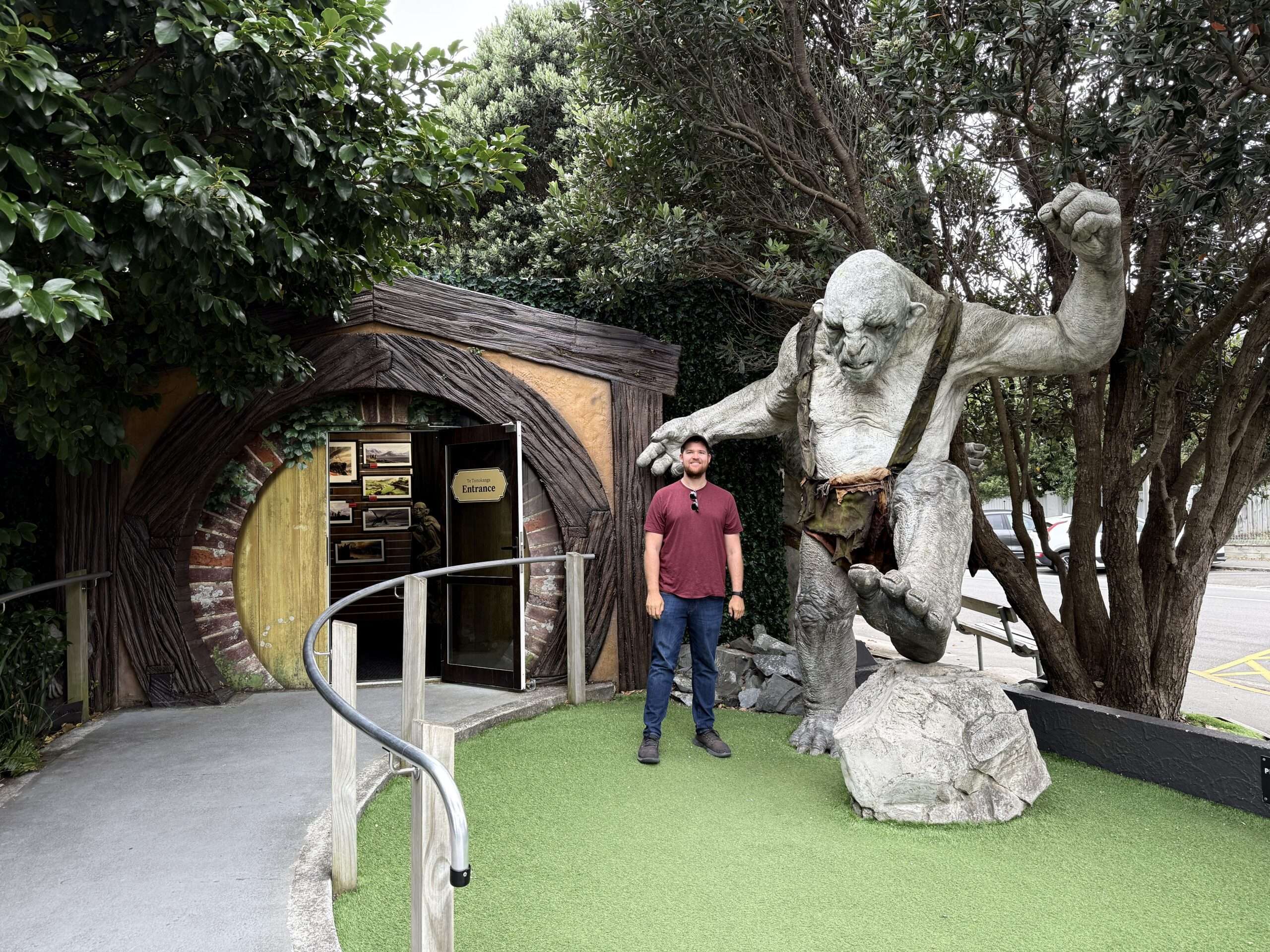Did you know that Wellington was the capital city of New Zealand? Well, now you do! And this Wellington itinerary will share how to dive into the history and culture of the country, learn about what makes New Zealand so unique from an ecological standpoint, and discover more details about the important movie industry within the country.
Day 1: The History and Culture of New Zealand in Wellington
Wellington, being the capital city of the country, has a lot of history and culture that helps explain the multicultural aspects of New Zealand. The islands of New Zealand were initially inhabited by the Māori people, a group that descends from the polynesian people, around 700 years ago. Later, the islands were colonized by Europeans and they eventually formed a treaty with the Māori people (although the treaty terms and application continues to be debated today) in 1840 to unify everyone. You can get more background about the history and culture in some of the museums and establishments in Wellington.
Museum of New Zealand Te Papa Tongarewa
The best place to go to get an understanding of New Zealand and a must-visit museum is the Museum of New Zealand Te Papa Tongarewa. Every Kiwi will recommend visiting this museum if you are in Wellington. The museum has a few different exhibitions, including one about the inconsistent interpretations of the treaty and an exhibit celebrating the culture and history of the Māori people. The museum also has a rooftop with views overlooking the Wellington skyline alongside the bay. We recommend spending 2-3 hours here. This is a must visit during your Wellington itinerary.
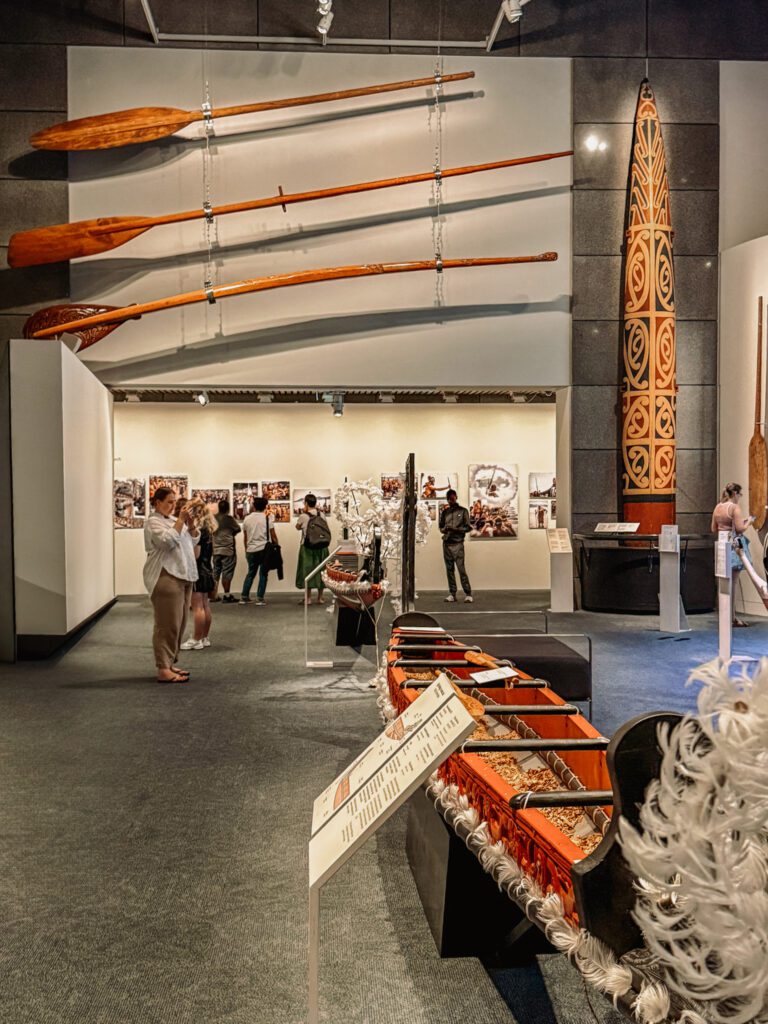
Wellington Waterfront
The waterfront right outside of the Museum of New Zealand Te Papa Tongarewa is full of activity and life. Here you can find markets, vendors, and people jumping into the ocean water. They practice a diving technique called the Manu, where they have to make as big of a splash as possible. On a nice day, you can watch kids and adults alike participate in jumping in. Walk along the walkway and take in the coastline.
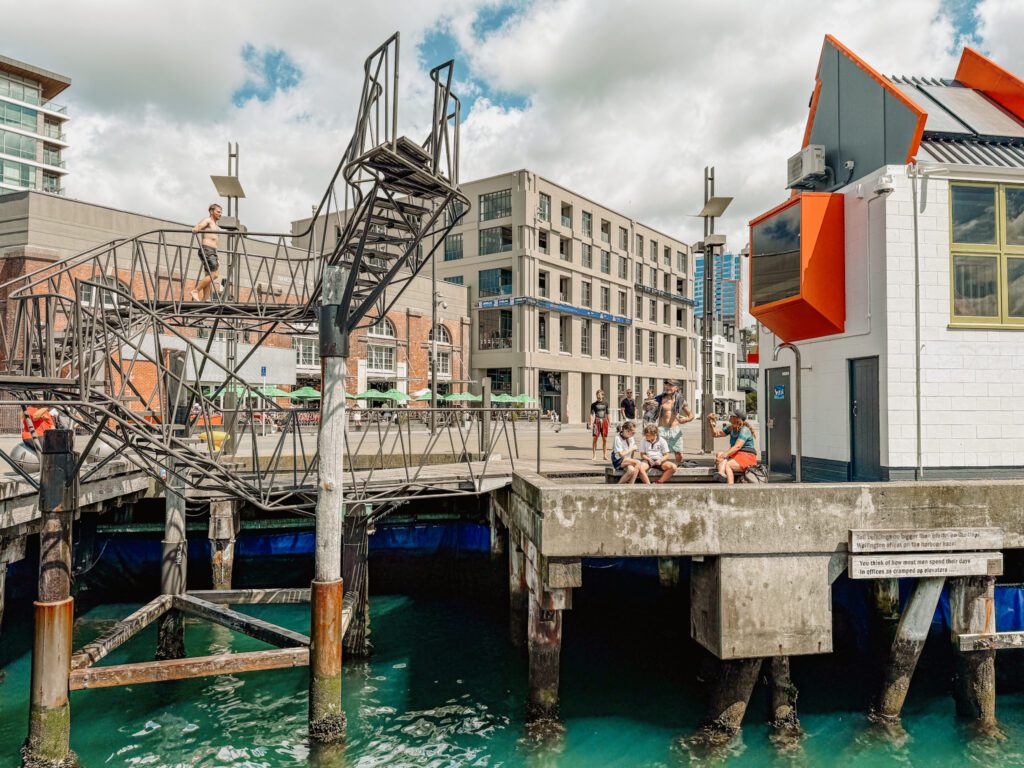
New Zealand Parliament, the Beehive
For those who are interested in how other countries operate, you can visit New Zealand’s parliament building as part of your Wellington itinerary. The main building is called the Beehive for its unique architecture. This is a great place to learn about how New Zealand operates today and the different buildings that make up the national government’s operation. The tours operate daily and are free for anyone to attend. You just need to sign up online in advance.
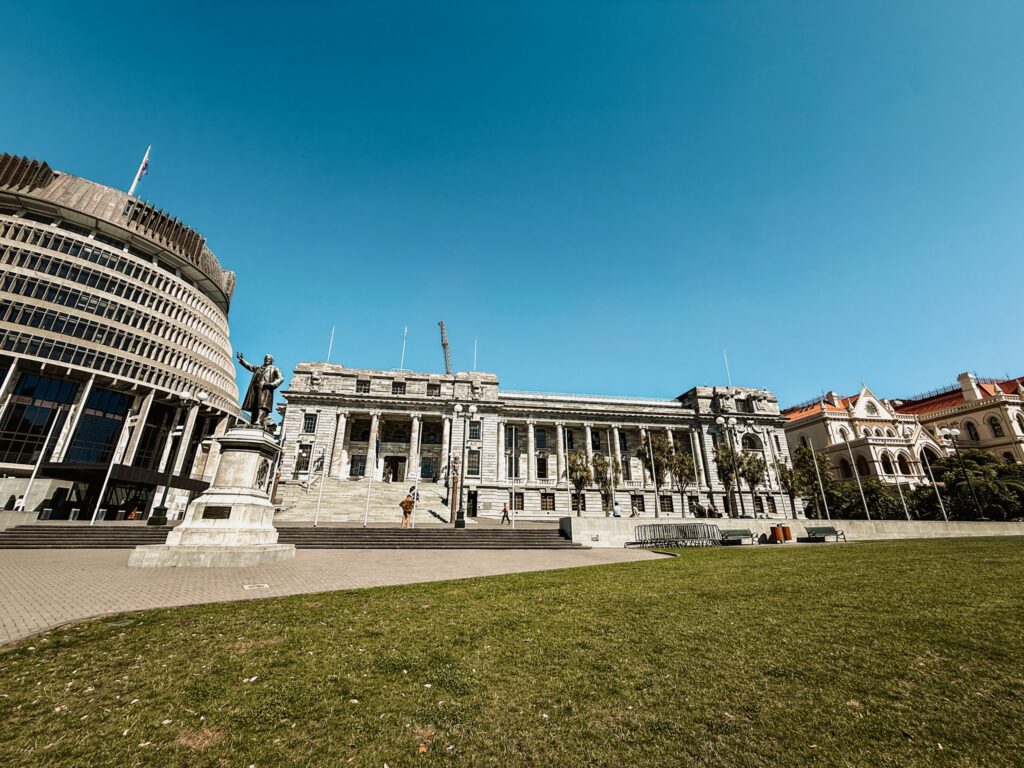
Wellington’s Cuba Street
Finally, to take in the current culture of Wellington, head to Cuba Street. This part of the city is known for its bohemian and artistic flair. It is full of boutiques, restaurants, bars, cafes, and street performers who add to the ambiance and energy of the area. It is definitely worth wandering through the area and discovering the unique shops throughout. Make sure to include this neighborhood as part of your Wellington itinerary.
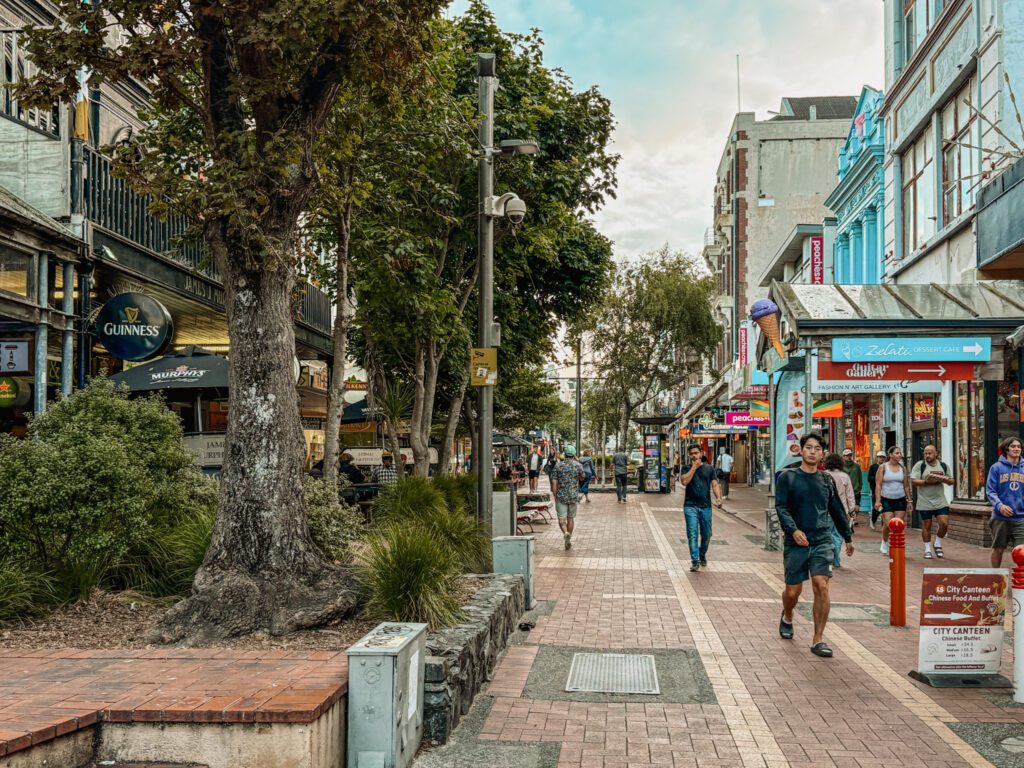
This is one of the best areas to stay in Wellington You can check out various hotel options here.
Day 2: The Ecology and Nature of New Zealand in Wellington
Zealandia Te Māra a Tāne
Zealandia Te Māra a Tāne is a native wildlife sanctuary in Wellington, New Zealand, focused on restoring the ecosystem of plants, birds, fish, reptiles, insects, etc that are native to New Zealand. This immense effort has made Zealandia Te Māra a Tāne a particularly special place for bird watching, something that is especially unique in New Zealand. This sanctuary is a must visit so make sure you add it to your Wellington itinerary.
New Zealand is known for its birds because it has an amazing diversity of unique bird species. Because New Zealand was an island so early in its creation, it was not inhabited with mammals (besides bats) and its isolation from other pieces of land allowed its bird population to flourish and evolve independently. It has many unique species of birds, some of which have become extinct over the last 700 years since humans have inhabited New Zealand.
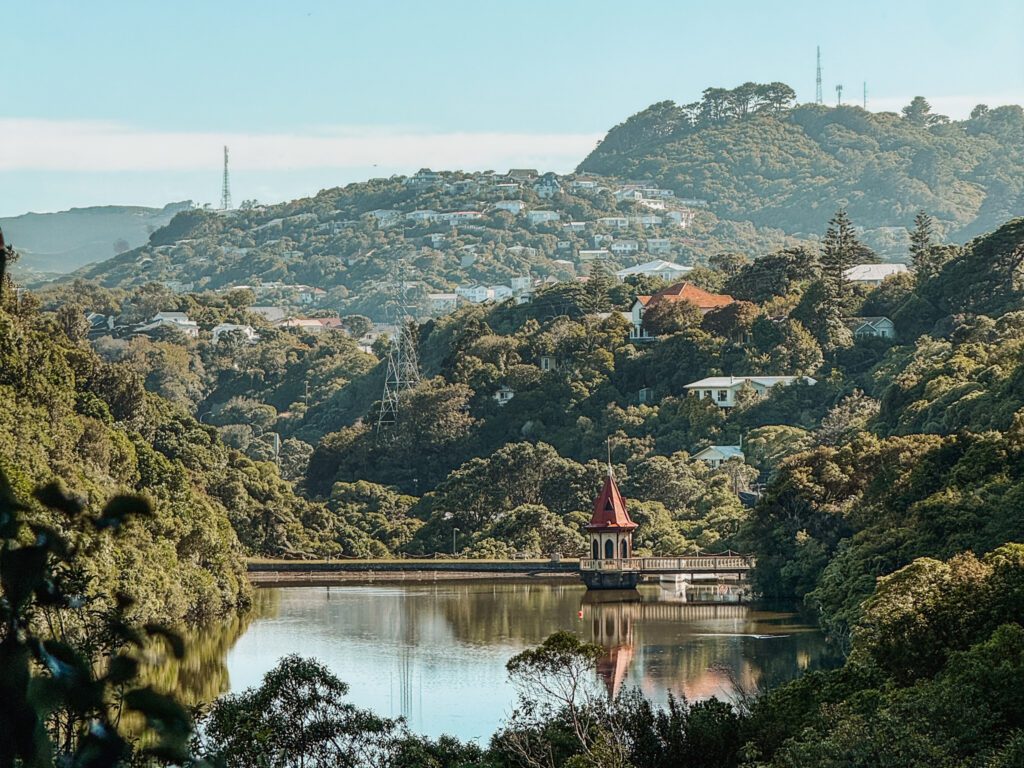
The Birds of Zealandia
Some of the birds that have become extinct include the moa, a flightless bird. There were nine different species of moa, the tallest standing around 6-7 feet at the back, with the neck extending above the back. As people inhabited New Zealand, the moa, among other birds, eventually went extinct. However, you can still see skeletons of different species of moa at a variety of museums around the country. Polynesian and European arrival on the islands of New Zealand had huge impacts on the native wildlife given that there had been no foreign interaction with the ecosystem for tens of millions of years prior. The introduction of foreign plants, insects, and animals changed the nature of New Zealand forever.
Another bird that became extinct was the giant Haast’s eagle, which is said to have been able to pick up humans and moa with their talons. Lastly, the takahē is a flightless bird that was thought to have gone extinct due to human impact. However, in 1948 these birds were rediscovered in Fiordland National Park on the South Island and are now part of conservation, breeding, and rehabilitation programs. Two of these birds now live within Zealandia Te Māra a Tāne.
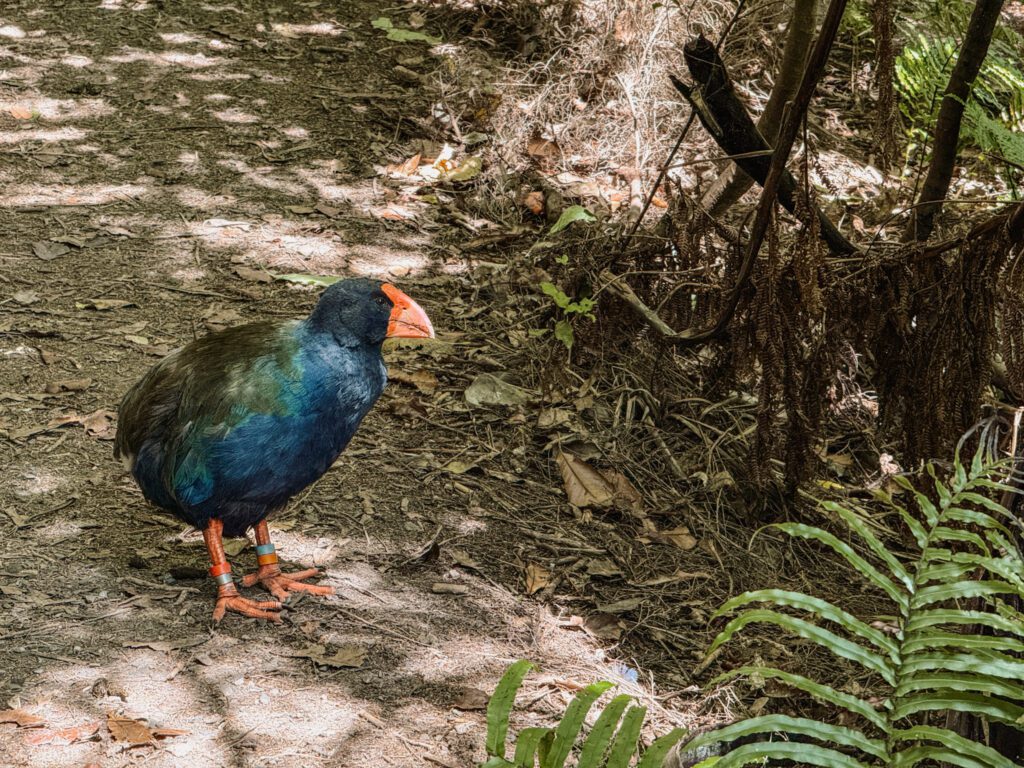
A Tour through Zealandia
We highly recommend visiting this ecosanctuary and doing a tour provided by the sanctuary to get information about the birds of New Zealand and the ecological history of this unique island. This is a highlight for your Wellington itinerary. It’s a bird watching paradise, but even those who do not have a particular interest in birds will find the ecosanctuary to be beautiful and interesting and you can also learn about the plants, reptiles, and insects that the sanctuary has helped conserve.
The aspect that makes Zealandia Te Māra a Tāne so unique is that it is the first fully-fenced urban ecosanctuary in the world. The fence system helps keep animals that are not native to New Zealand out of the protected land. In addition, they control the spread of introduced plants and flying insects to try and rehabilitate the land to what it was prior to the introduction of humans.
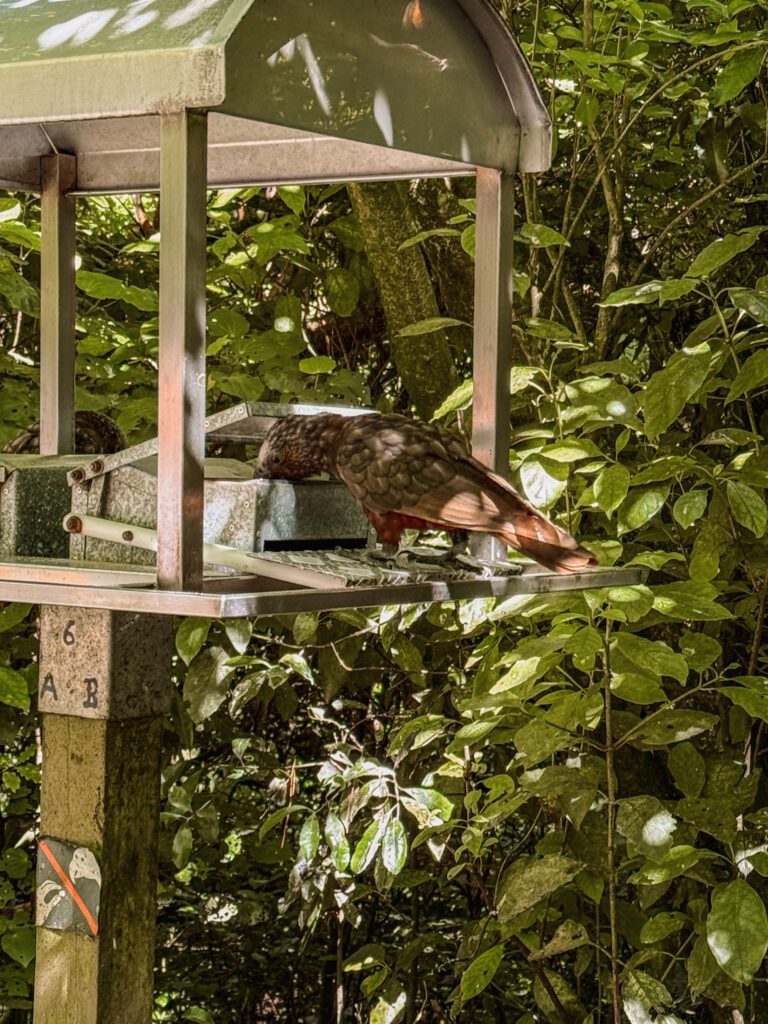
During the day, you have the chance of seeing birds especially in areas where food is supplied in different feeding contraptions. Your guide can explain more about where this occurs during your guided walk around the sanctuary. And if you are interested in seeing the takahē, you can ask your guide where their supplemental feeding takes place to give you the best chance to see these rare birds. In the evenings, you have the chance to see nocturnal birds, such as the kiwi birds (the national bird of New Zealand).
Expect to spend at least 2 hours at the ecosanctuary and closer to 4 hours to those who are more interested in bird-watching.
Wellington Cable Car
From the Zealandia Ecosanctuary, you will want to take the free shuttle from the sanctuary to the top of the Wellington cable car. Here, you will have great views of the city below and you can explore the Cable Car Museum to learn more about the history of this transportation system in Wellington. Finally, you can walk around the Wellington Botanic Garden before taking the cable car down the hill. (You pay for the cable car ride at the base of the hill as you leave the station.)
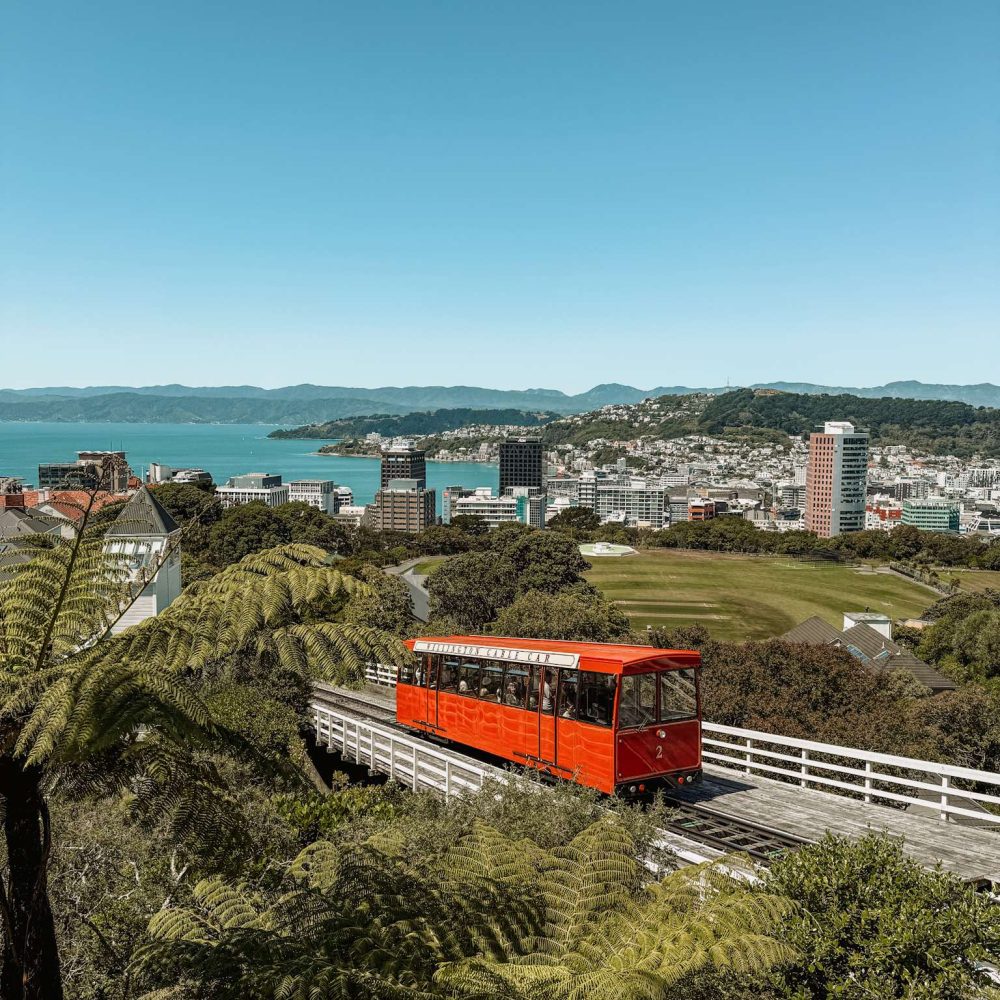
Day 3: The Movie Industry in Wellington
The final day in Wellington will be an appreciation of the movie industry in New Zealand. The touring is focused on Lord of the Rings because it is the production that elevated the local move industry to a global scale. Peter Jackson, the director of the movies, chose to use his home country of New Zealand as the setting for the movies for its other worldly landscapes and natural beauty. In addition, he used local artists and production studios, which brought international recognition and continues to bring numerous film and large-scale creative projects to New Zealand.
Weta Workshop and Cave Tour
Weta Workshop is a creative company that was used for the Lord of the Rings movies, developing the prosthetics, costumes, weapons, and creatures for the movies. The workshop is in Wellington and provides daily tours. Because much of what they produce is highly confidential, they have developed a separate space where they go through the whole process of designing and producing all the different physical manifestations of characters for different productions. They are not afraid of thinking outside the box or bringing in different artists to move their craft forward and deliver for each and every project.
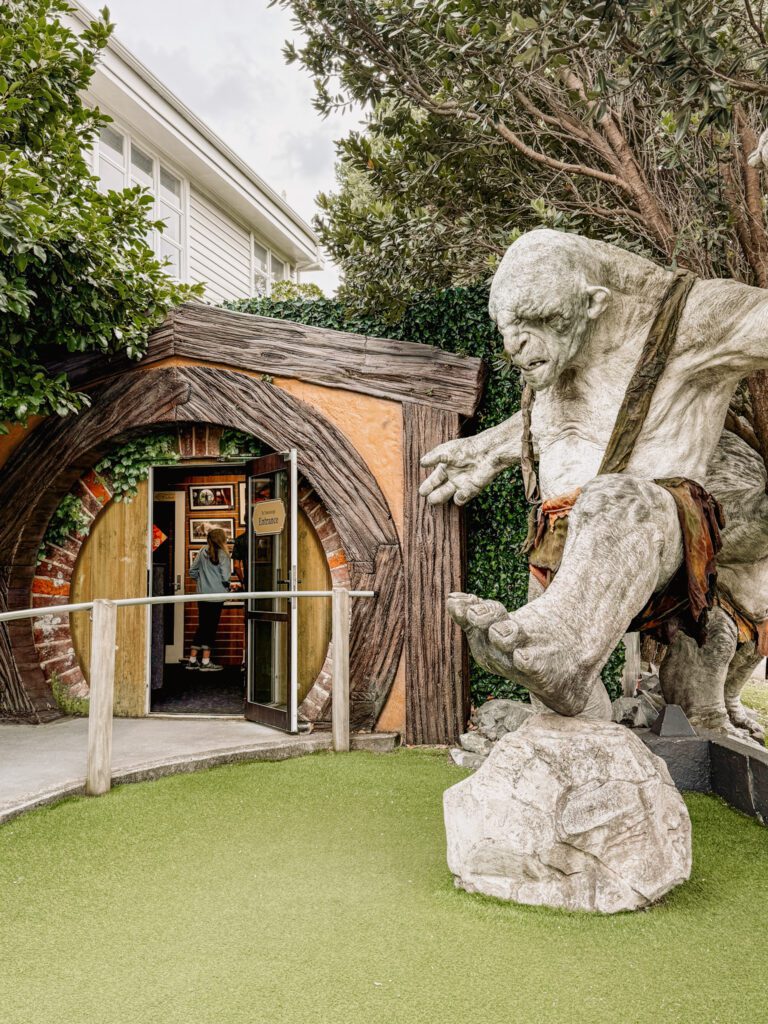
The Weta Workshop tour is informational and exciting and a production in itself, showing you a glimpse into what Weta Workshop does on a day to day basis. It’s interactive, fun, and designed for lovers of movies, art, video games, and any other digital and physical production even beyond Lord of the Rings. This really is a must-do activity as part of your Wellington itinerary if you are interested in the movie industry.
Beyond the 90 minute tour, the facility also hosts creative workshops about a variety of topics and techniques. They also provide a shuttle service to and from Wellington for an additional cost.
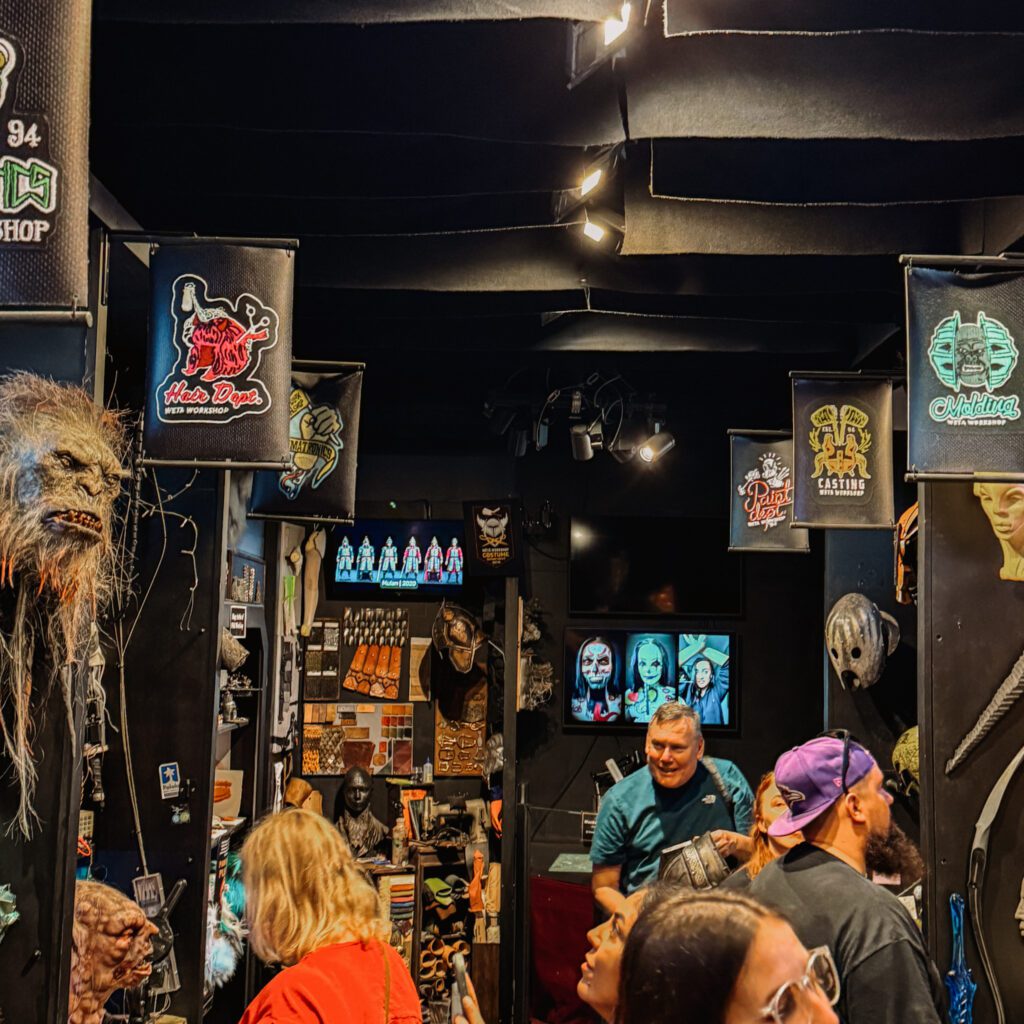
Mount Victoria Lookout
For your final activity in Wellington, you will want to head to the Mount Victoria Lookout. While you can drive up to the lookout, the best way to experience this hill is to hike up it from the Oriental Beach on the bay. You can follow the loop linked here to understand the best path. At the top of the lookout, you can see the Wellington airport and watch the planes fly in. Wellington is known for being incredibly windy and on those days, you can see the planes fly tilted to combat the wind as they land.
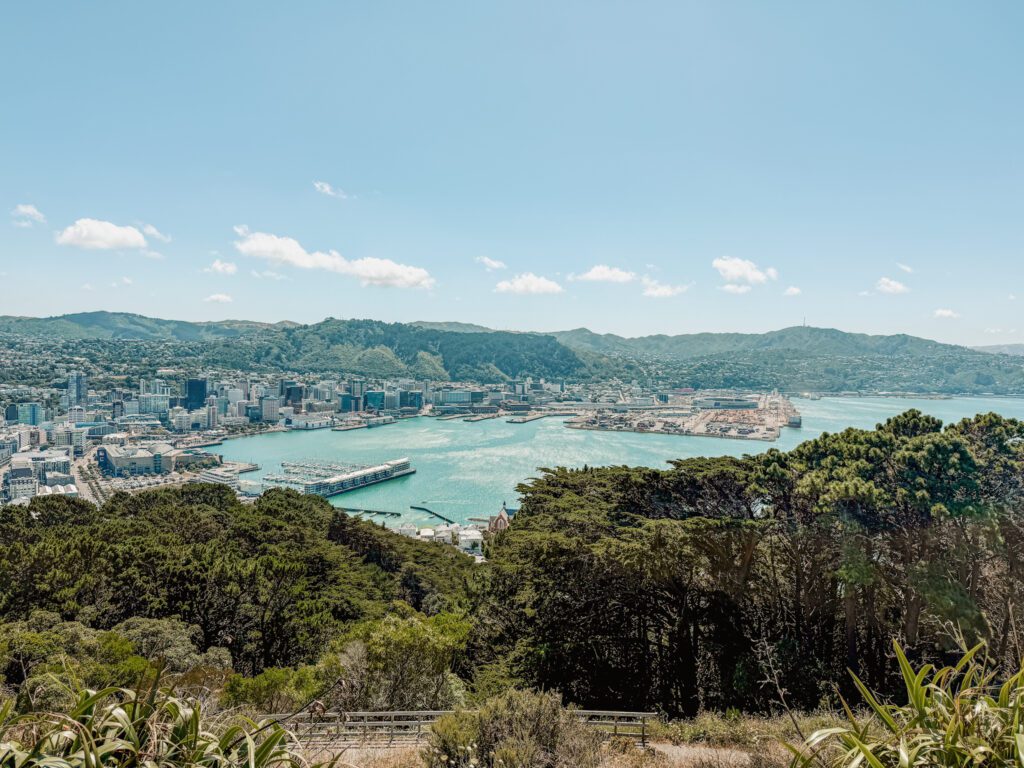
For Lord of the Rings lovers, there are some other stops throughout the loop that were filming locations for the movies including the Lord of the Rings Hobbit’s Hideout, Frodo’s Tree, and Frodo Looks Back at the Shire. After your hike, consider hopping into the water at Oriental Beach to cool off if it’s warm.
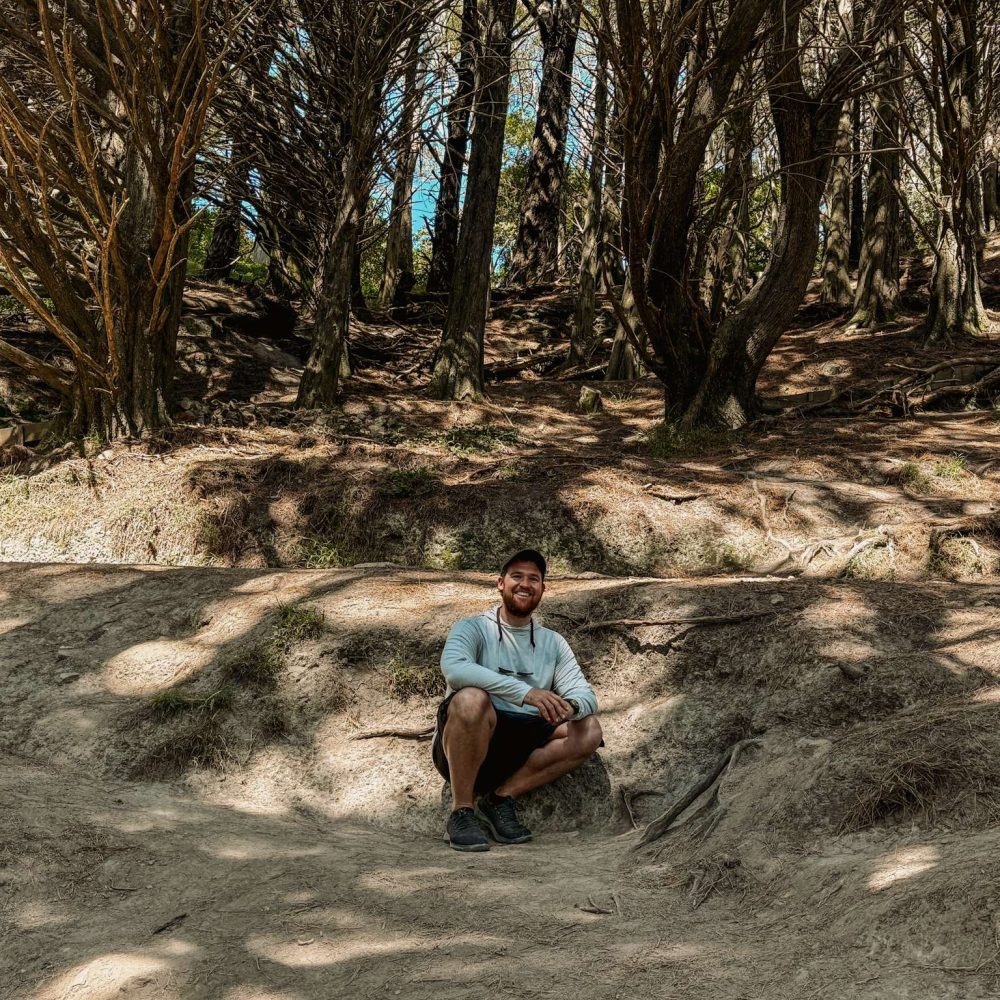
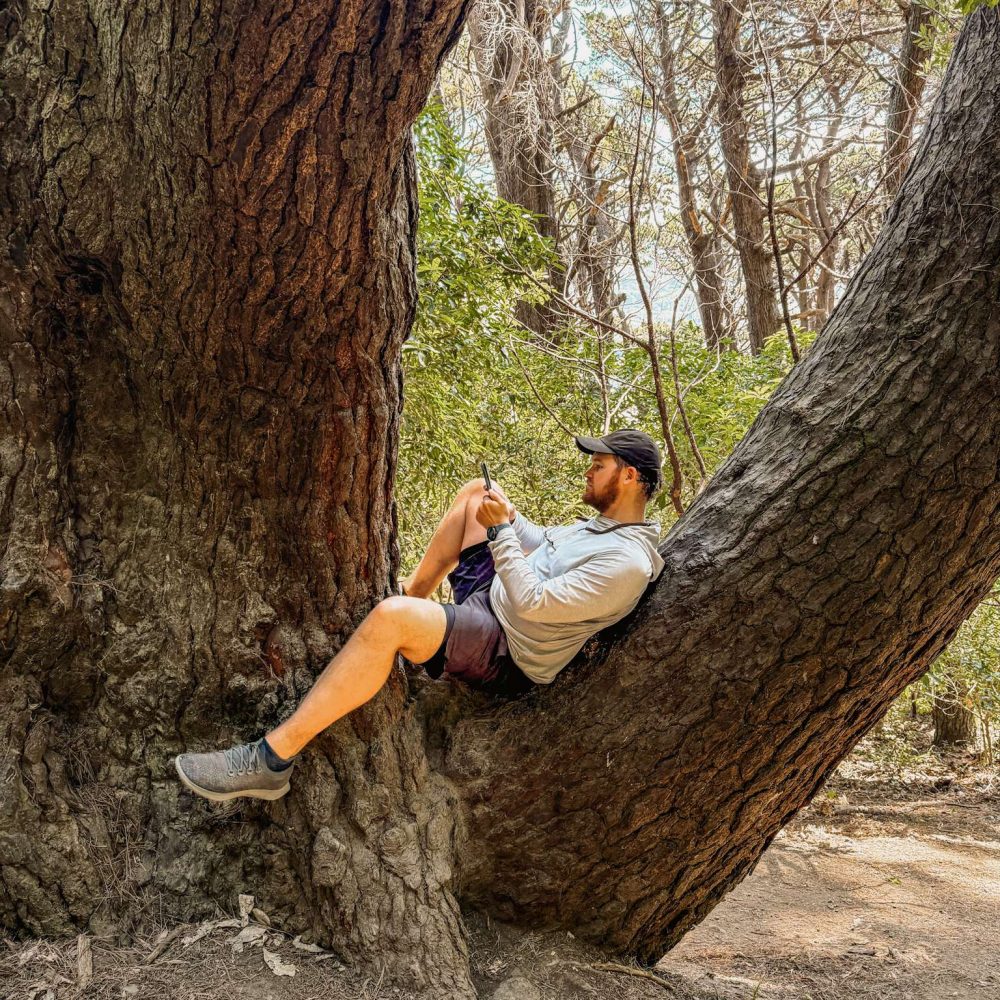

Things to Do Between Wellington and Taupo
Kaitoke Regional Park - visit the set location of Rivendell in Lord of the Rings and a place where they do still have an artifact from the filming of the movies
-
- Pukaha National Wildlife Centre – a wildlife center where they are currently raising kiwis. Because kiwis are nocturnal, they have designed the habitat to have red lights during the day to simulate the night and white light at night to simulate the daytime, allowing you to see them moving around their habitat
- Napier – the Art Deco capital of the world and a nice coastal town to see this unique period architecture. It also is located next to the Hawke’s Bay Wine Region, a popular place for excellent wine and delicious food
The best way to get around New Zealand and outside of Wellington is by renting a car.
